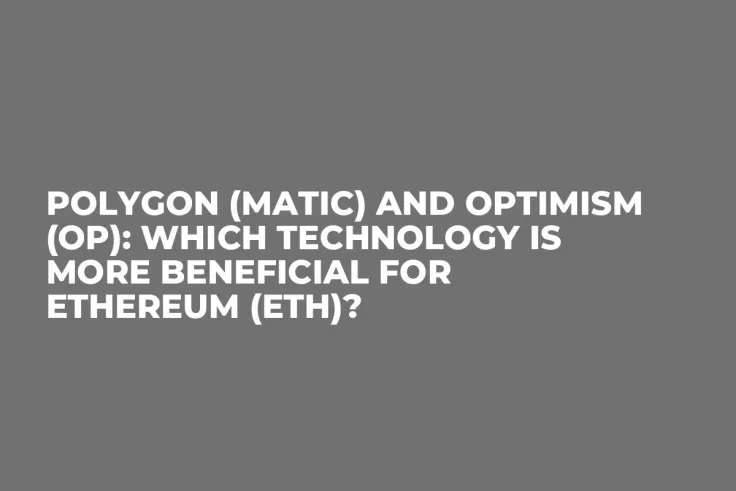
Disclaimer: The opinions expressed by our writers are their own and do not represent the views of U.Today. The financial and market information provided on U.Today is intended for informational purposes only. U.Today is not liable for any financial losses incurred while trading cryptocurrencies. Conduct your own research by contacting financial experts before making any investment decisions. We believe that all content is accurate as of the date of publication, but certain offers mentioned may no longer be available.
In recent years, Ethereum (ETH) has established itself as the leading blockchain in the cryptocurrency market due to its ability to facilitate the use of smart contracts. This feature allows for the creation of decentralized applications (dApps), tokens and other applications without the need for intermediaries.
However, as the network has grown in popularity, it has also experienced issues with scalability and high transaction fees. In response to these challenges, several competitors such as Cardano (ADA), Solana (SOL) and Avalanche (AVAX) have emerged to address the scalability issues faced by Ethereum.
Despite the emergence of rival blockchain platforms that boast advanced technology, Ethereum remains the most secure option due to its proven track record over time. In order to address its scalability and cost issues, solutions such as Layer 2 protocols have emerged as a means to enhance the Ethereum blockchain.
Two notable examples of Layer 2 solutions are Polygon (MATIC) and Optimism (OP). Both protocols aim to increase scalability on the Ethereum network, but they have distinct differences in their approach.
Polygon vs. Optimism
Polygon, also known as Matic Network, is a Layer 2 scaling solution that aims to improve Ethereum's scalability by using a layered architecture. This architecture allows for the faster and more efficient execution of smart contracts and decentralized applications.
Optimism is another Layer 2 scaling solution that aims to improve Ethereum's scalability by enabling faster and lower-cost transfers on the network by transaction aggregation. Additionally, Optimism's Layer 2 supports more advanced smart contract functionality.
Despite both Polygon and Optimism aiming to improve Ethereum's scalability, they achieve this through different methods.
Polygon uses ZK-Rollups, which makes use of zk-SNARKs, a zero-knowledge proof technology, to validate transactions without revealing the details of the transactions. This allows for a large number of transactions to be grouped into a single block, thereby increasing the processing capacity of the blockchain.
On the other hand, Optimism uses a mechanism called Optimistic Rollups, which uses a leader mechanism to ensure security. Transactions are processed outside of the main blockchain but are still considered secure as long as they are confirmed in an honest manner by the leader.
But which one is best for Ethereum?
One of the leading authorities on this topic is Ethereum co-creator Vitalik Buterin. According to Buterin, second-layer Zero Knowledge Rollups (ZK-Rollups) are likely to ultimately surpass Optimistic Rollups as the preferred scalability solution for the Ethereum network.
While Buterin acknowledges that the Optimistic solution is currently more advanced, he believes that the underlying technology of ZK-Rollups will ultimately prove to be superior in the long run. Furthermore, Buterin notes that ZK-Rollups are faster at facilitating transactions on and off the main network, which could lead to increased adoption of this technology.
 Dan Burgin
Dan Burgin Godfrey Benjamin
Godfrey Benjamin Tomiwabold Olajide
Tomiwabold Olajide Caroline Amosun
Caroline Amosun